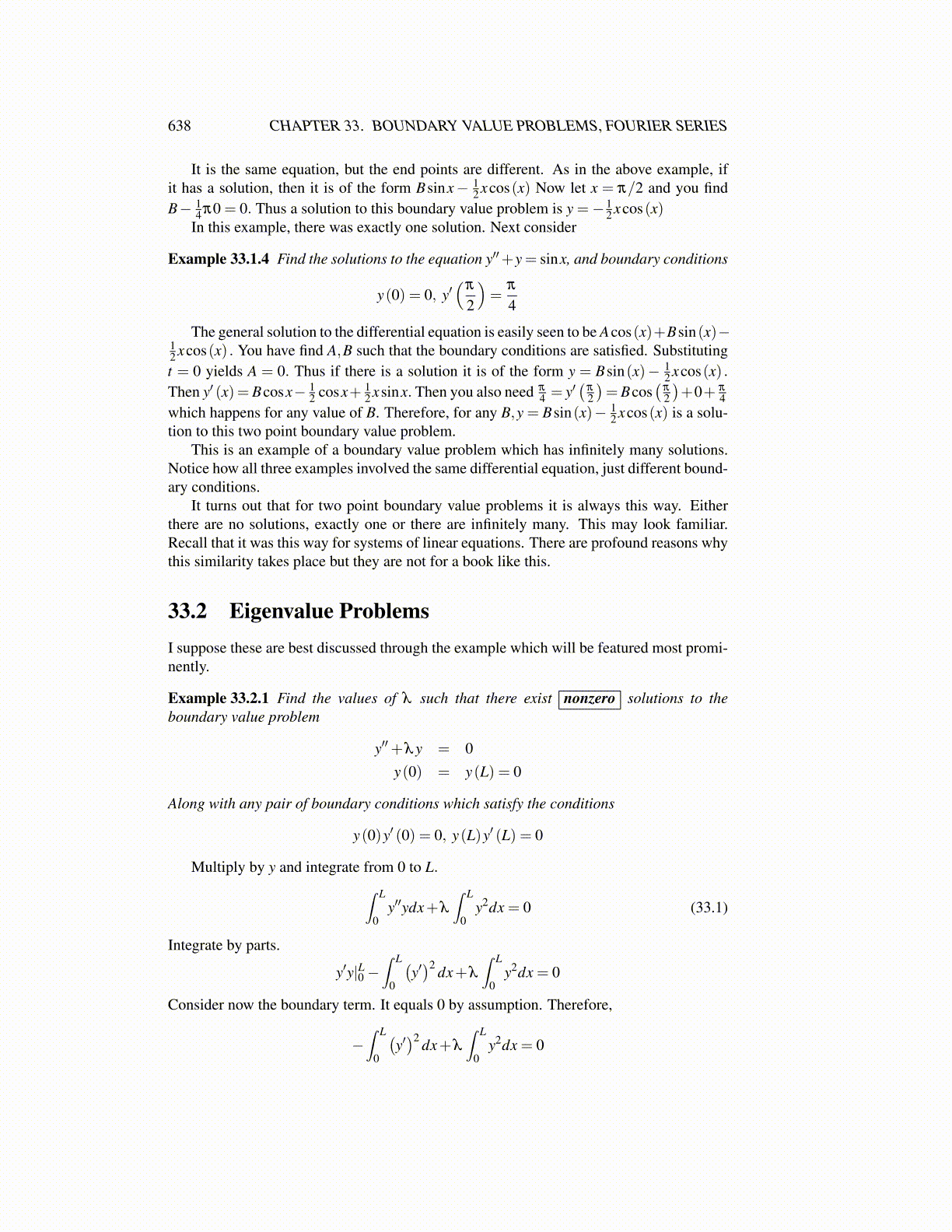
638 CHAPTER 33. BOUNDARY VALUE PROBLEMS, FOURIER SERIES
It is the same equation, but the end points are different. As in the above example, ifit has a solution, then it is of the form Bsinx− 1
2 xcos(x) Now let x = π/2 and you findB− 1
4 π0 = 0. Thus a solution to this boundary value problem is y =− 12 xcos(x)
In this example, there was exactly one solution. Next consider
Example 33.1.4 Find the solutions to the equation y′′+y = sinx, and boundary conditions
y(0) = 0, y′(
π
2
)=
π
4
The general solution to the differential equation is easily seen to be Acos(x)+Bsin(x)−12 xcos(x) . You have find A,B such that the boundary conditions are satisfied. Substitutingt = 0 yields A = 0. Thus if there is a solution it is of the form y = Bsin(x)− 1
2 xcos(x) .Then y′ (x) =Bcosx− 1
2 cosx+ 12 xsinx. Then you also need π
4 = y′(
π
2
)=Bcos
(π
2
)+0+ π
4which happens for any value of B. Therefore, for any B,y = Bsin(x)− 1
2 xcos(x) is a solu-tion to this two point boundary value problem.
This is an example of a boundary value problem which has infinitely many solutions.Notice how all three examples involved the same differential equation, just different bound-ary conditions.
It turns out that for two point boundary value problems it is always this way. Eitherthere are no solutions, exactly one or there are infinitely many. This may look familiar.Recall that it was this way for systems of linear equations. There are profound reasons whythis similarity takes place but they are not for a book like this.
33.2 Eigenvalue ProblemsI suppose these are best discussed through the example which will be featured most promi-nently.
Example 33.2.1 Find the values of λ such that there exist nonzero solutions to theboundary value problem
y′′+λy = 0y(0) = y(L) = 0
Along with any pair of boundary conditions which satisfy the conditions
y(0)y′ (0) = 0, y(L)y′ (L) = 0
Multiply by y and integrate from 0 to L.∫ L
0y′′ydx+λ
∫ L
0y2dx = 0 (33.1)
Integrate by parts.
y′y|L0−∫ L
0
(y′)2 dx+λ
∫ L
0y2dx = 0
Consider now the boundary term. It equals 0 by assumption. Therefore,
−∫ L
0
(y′)2 dx+λ
∫ L
0y2dx = 0